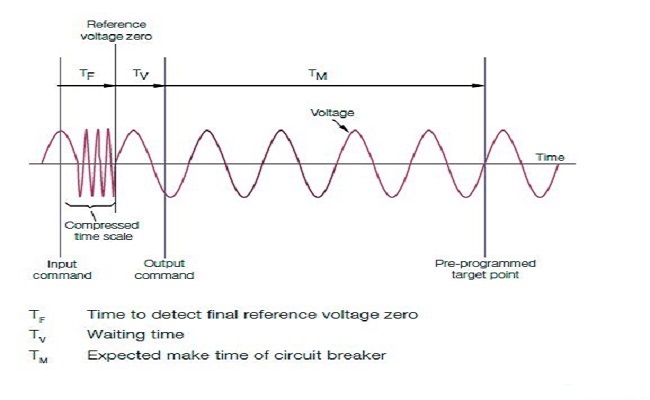
CS is a method for eliminating harmful transients via time controlled switching operations. Closing or opening commands to the CB are delayed in such a way that making or contact separation will occur at the optimum time instant related to the phase angle.
In order to avoid switching transients, the making instant in this case shall be at voltage zero.
If controlled opening is applied it is important that all protection trip commands, in the event of fault interruptions, are by-passing the controller.
For example when the capacitor bank is to be energized, an input command is given to the controller. the controller will determine a reference time instant, related to the phase angle of the busbar voltage. after an internally created waiting time, the controller will then give an output closing command to the CB. The time instant for the output closing command is determined by the make time of the CB and the target point for making. Both the predictable make time and target point have been programmed into the controller.
The CB will then make the current at the correct time instant and minimize the switching transients. Figure show time sequence in CS in a CB phase.



